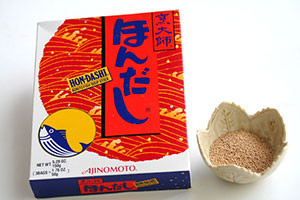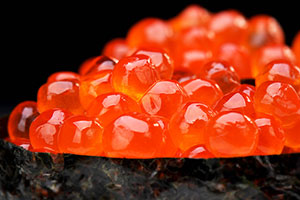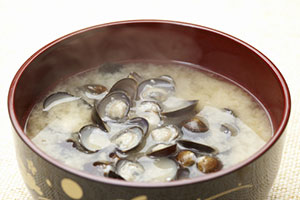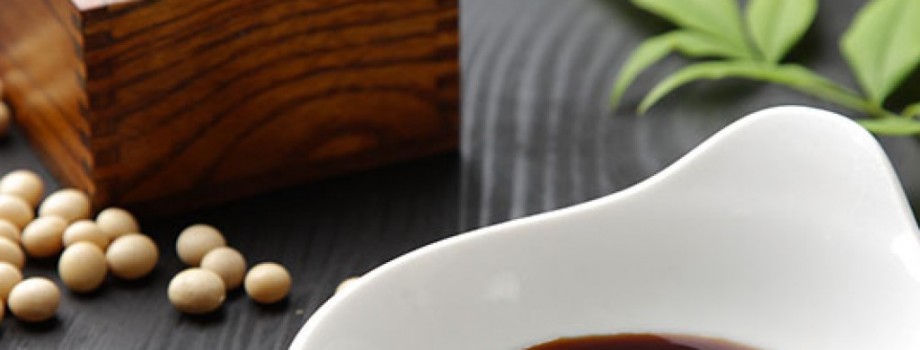If you want to emulate good Japanese cooking at home, it’s no use substituting authentic ingredients with what you have on hand in the cupboard. Sourcing Japanese brands and the specific ingredients used by top chefs from Japanese restaurants can make all the difference to your end dish. Take rice, for example. It’s tempting to save a trip to the supermarket and use something like Jasmine, but for the correct flavour and texture, you’ll need to source a specific Japanese brand like Akita Komachi, as Japanese rice is scentless and stickier and therefore better to eat with chopsticks.
If you go to the effort of purchasing authentic ingredients you’ll be rewarded with authentic tasting dishes, so hunt down your closest Japanese supermarket, found in most major cities, and stock up on these 20 kitchen essentials:
- Soy Sauce – the must-have key ingredient in Japanese cuisine, so it’s worth finding the right one. There are two types: koikuchi, which is dark and rich and usukuchi which is lighter in colour. It doesn’t matter which one you choose, just make sure it’s an authentic Japanese brand like Kikkoman.
- Sake – much like the use of white wine in Italian and French recipes, sake is Japanese alcohol that is used to bring sauces and soups to life.
- Mirin – a sweet alternative to sake which has far less alcohol, Mirin is a rice wine that is almost 50% sugar. It cuts through overpowering fish smells and gives vegetables and rice that healthy, shiny look. It can also be used as a condiment on its own.
 Hon Dashi – this is a fish stock powder made from bonito or swordfish, which is just as ubiquitous as animal stocks in Western cupboards. Use it for soups like Miso (just add water and miso paste!).
Hon Dashi – this is a fish stock powder made from bonito or swordfish, which is just as ubiquitous as animal stocks in Western cupboards. Use it for soups like Miso (just add water and miso paste!).- Mayo – Japanese chefs love their mayonnaise, but cannot substitute Western egg mayonnaise in their dishes as the two are completely different in flavour and texture. So hunt down the delectable, addictive version by Kewpie and add it to sushi, curries, pastas and sauces.
- Rice Vinegar – not to be confused with Chinese rice wine, it’s a light vinegar used for sauces and dressings for salads.
- Ponzu – this little citrus sauce is creeping onto all types of restaurant menus for its ability to add just the right amount of tang. In Japanese cuisine, you’ll find it in everything from a hotpot to a hamburger.
- Potato Starch (katakuriko) – like flour or cornflour in Western cooking, this starch is used to make sauces thicker, and make sure flavours stick to meats and for deep frying. It provides a lovely crisp outer shell.
- Panko – the Japanese breadcrumb, panko is softer and less dense than your usual breadcrumb and is easily made by blitzing soft white bread in a blender. Perfect for deep frying chicken.
 Awabi (abalone) – not something you come across in most kitchens, however, if you feel like you’ve mastered the basics why not try cooking abalone? It can be eaten raw, salted or steamed.
Awabi (abalone) – not something you come across in most kitchens, however, if you feel like you’ve mastered the basics why not try cooking abalone? It can be eaten raw, salted or steamed.- Ikura (salmon roe) – a delicacy in Japan, these roe are bright orange, the size of a small pearl and simply bursting with flavour. Use these oily fish eggs as a garnish – they’re higher in fat and protein than actual salmon!
- Unagi (freshwater eel) – another ingredient you won’t find in Western cupboards, but eel is a fantastic Japanese “street food”. If cooking it yourself, roast fillets over charcoal and serve over hot rice. Otherwise you can find it pre-cooked in vacuum packs.
- Bonito Flakes – this multitasking ingredient makes stock and is also a great condiment. You can find them in pre-shaved bags.
- Dried Shiitake Mushrooms – a must-have in your bag of tricks, dried gives you a much more intense flavour than fresh and they’re great for flavouring stocks and soups.
- Green Tea Leaves – an everyday staple, green tea comes in many guises: Sencha (the most popular), Kukicha (the stems), Genmaicha (toasted with rice) and Matcha (powdered) which is better for iced drinks or ice cream.
- White Daikon – the Japanese radish, this versatile ingredient can be eaten raw, cooked or pickled. Use it to cut through oily dishes – perfect with stews and fish.
- Shiso Leaves – a common herb which is as popular as basil in Italy, ‘perilla’ can be eaten fresh (green varieties) and pickled (red varieties).
 Miso – probably the most recognisable ingredient for those unaccustomed to Japanese food, miso is a fermented paste that can not only be used as a soup base, but also as a grilling marinade or to add a quick hit of flavour. The darker the paste, the stronger it is.
Miso – probably the most recognisable ingredient for those unaccustomed to Japanese food, miso is a fermented paste that can not only be used as a soup base, but also as a grilling marinade or to add a quick hit of flavour. The darker the paste, the stronger it is.- Konbu – the second most popular seaweed after Wakame, konbu is a dried seaweed that, when soaked in water, can be molded for sushi or simply added to soups. Some chefs score it to bring out the flavours.
- Raw Fish – not something to have “on hand”, but if seeking out raw fish specifically for a Japanese dish ask the fishmonger to choose a cut that would suit best. If roasting a whole fish, opt for Pacific Saury or Sea Bream.






 (4 votes, average: 4.00 out of 5)
(4 votes, average: 4.00 out of 5)